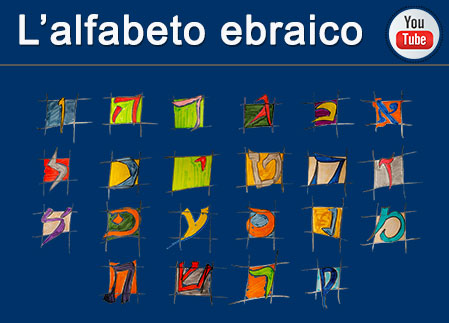Catholic Bishops' Conference of England and Wales. Committee for Catholic/Jewish Relations
Regno Unito 2004
The Lenten lectionary presents many challenges for the homily. On the positive side, links can be made between the Christian and Jewish liturgical cycles of repentance. The month of preparation and the ten days leading to the Days of Awe, especially the Day of Atonement in the Jewish calendar, closely parallel the season of Lent. During this time one can also confront some common misinterpretations of the meaning of the readings especially phrases like 'the hardheartedness of the Jews' and 'blindness', clichés which have unconsciously transmitted anti-Judaism. Prophetic texts such as Jeremiah's 'new covenant' (cycle B, Fifth Sunday), and Isaiah (cycle C, Fifth Sunday), call the assembly to proclaim Jesus as the Christ. In doing this it is important to avoid insensitivity towards Judaism. A positive attitude to Judaism comes from the acknowledgement that while Judaism and Christianity are distinct and unique, they are related to one another. Christianity is 'grafted on' and continues to draw sustenance from the common root, biblical Israel (Rom 11:13-24). Judaism has developed along its own path and Jews continue to be a people of faith in covenant with God.Judaism at the time of Jesus
Many of the New Testament texts, such as Matthew's references to hypocrites in the synagogue (Ash Wednesday), John's depiction of Jesus in the Temple (Cycle B, Third Sunday), and Jesus' conflicts with the Pharisees (eg Luke cycle C, Fourth Sunday), can give the impression that the Judaism of Jesus' day was devoid of spiritual depth and essentially at odds with Jesus' teaching. References to earlier divine punishments of the Jews (e.g. 1 Cor, cycle C, Third Sunday) can further intensify a false image of Jews and Judaism as a people rejected by God.
Jesus – a Torah-observant Jew
In fact, however, as the 1985 Notes are at pains to clarify (sec. III and IV), Jesus was observant of the Torah (e.g. in the details of his circumcision and purification given in Lk 2:21-24), he extolled respect for it (see Mt 5:17-20), and he invited obedience to it (see Mt 8:4). Jesus taught in the synagogues, (see Mt 4:23 and 9:35; Lk 4:15-18; Jn 18-20) and in the Temple, which he frequented, as did the disciples even after the Resurrection (see Acts 2:46; 3:1ff). While Jesus showed uniqueness and authority in his interpretation of God's word in the Torah – in a manner that scandalised some Jews and impressed others – he did not oppose it, nor did he wish to abrogate it.
Jesus and the Pharisees
Jesus was perhaps closer to the Pharisees in his religious vision than to any other group of his time. The 1985 Notes suggest that this affinity with Pharisaism may be a reason for many of his apparent controversies with them (see III,19). Jesus shared with the Pharisees a number of distinctive doctrines: the resurrection of the body; forms of piety such as almsgiving, daily prayer and fasting; the liturgical practice of addressing God as 'Father'; and the priority of the love commandment (see III,17). Many scholars are of the view that Jesus was not so much arguing against 'the Pharisees' as a group, as he was condemning excesses of some Pharisees, excesses of a sort that can be found among some Christians as well. In some cases, Jesus appears to have been participating in internal Pharisaic debates on various points of interpretation of God's law. In the case of divorce (see Mk 10:2-12), an issue that was debated hotly between the Pharisaic schools of Hillel and Shammai, Jesus goes beyond even the more stringent position of the House of Shammai. In other cases, such as the rejection of a literal interpretation of the lex talionis ('An eye for an eye…'), Jesus' interpretation of biblical law is similar to that found in some of the prophets and ultimately adopted by rabbinic tradition as can be seen in the Talmud.
'Reading back' into the Life of Jesus
After the Church had distanced itself from Judaism, it tended to telescope the long historical process whereby the Gospels were set down some generations after Jesus' death. Thus certain controversies that may actually have taken place between Church leaders and rabbis towards the end of the first century were 'read back' into the life of Jesus: some (New Testament) references hostile or less than favourable to Jews have their historical context in conflicts between the nascent Church and the Jewish community. Certain controversies reflect Christian-Jewish relations long after the time of Jesus. To establish this is of capital importance if we wish to bring out the meaning of certain Gospel texts for the Christians of today. All this should be taken into account when preparing catechesis and homilies for the weeks of Lent and Holy Week (1985 Notes no.IV,21; see no.26 below)
Holy Week: The Passion Narratives
Because of the tragic history of the 'Christ-killer' charge as providing a rallying cry for anti-Semites over the centuries, a strong and careful homiletic stance is necessary to combat its lingering effects today. Homilists and catechists should seek to provide a proper context for the proclamation of the passion narratives.
The Death of Jesus
The message of the liturgy in proclaiming the passion narratives in full is to enable the assembly to see vividly the love of Christ for each person, despite their sins, a love that even death could not vanquish. Christ in his boundless love freely underwent his passion and death because of the sins of all so that all might attain salvation (Nostra Aetate, no.4). To the extent that Christians over the centuries made Jews the scapegoat for Christ's death, they drew themselves away from the paschal mystery. For it is only by dying to one's sins that we can hope to rise with Christ to new life. This is a central truth of the Catholic faith stated by the Catechism of the Council of Trent in the sixteenth century and reaffirmed by the 1985 Notes (no.IV,22).
The Passion Narratives and Theology
It is necessary to remember that the passion narratives do not offer eyewitness accounts or a modern transcript of historical events. Rather, the events have had their meaning focused, as it were, through the four theological 'lenses' of the Gospels. By comparing what is shared and what distinguishes the various Gospel accounts from each other, the homilist can discern the core from the particular optics of each. One can then better see the significant theological differences between the passion narratives. These differences also are part of the inspired Word of God.
The Historical Elements of the Passion Narratives
Certain historical essentials are shared by all four accounts: a growing hostility against Jesus on the part of some Jewish religious leaders (note that the Synoptic Gospels do not mention the Pharisees as being involved in the events leading to Jesus' death, but only the 'chief priests, scribes and elders'); the Last Supper with the disciples; betrayal by Judas; arrest outside the city (an action conducted covertly by the Roman and Temple authorities because of Jesus' popularity among his fellow Jews); interrogation before a high priest (not necessarily a Sanhedrin trial); formal condemnation by Pontius Pilate (cf the Apostles' and Nicene Creeds, which mention only Pilate even though some Jews were involved); crucifixion by Roman soldiers; affixing the title 'King of the Jews' on the cross; death; burial; and resurrection. Many other elements, such as the crowds shouting 'His blood be upon us and on our children' in Matthew, or the generic use of the term 'the Jews' in John, are unique to a given author and must be understood within the context of that author's overall theological scheme. Often, these unique elements reflect the perceived needs and emphases of the author's particular community at the end of the first century, after the split between Jews and Christians was well underway. The bitterness towards synagogue Judaism seen in John's Gospel (eg Jn 9:22; 16:2) most likely reflects the bitterness felt by John's own community after its 'parting of the ways' with the Jewish community, and the martyrdom of St Stephen illustrates that verbal disputes could, at times, lead to violence by Jews against fellow Jews who believed in Jesus.
Christian Reflection on the Passion
Christian reflection on the passion should lead to a deep sense of the need for reconciliation with the Jewish community today. Pope John Paul II has said:
"Considering history in the light of the principles of faith in God, we must also reflect on the catastrophic event of the Shoah…Considering this mystery of the suffering of Israel's children, their witness of hope, of faith, and of humanity under dehumanising outrages, the Church experiences ever more deeply her common bond with the Jewish people and with their treasure of spiritual riches in the past and in the present."
(Address to Jewish Leadership, Miami, 11 September 1987)
Produced by:
Committee for Catholic/Jewish Relations
Department for Mission and Unity
Catholic Bishops' Conference of England and Wales
2004
555 visualizzazioni.
Inserito 01/01/1970
Relazioni Ebraico-Cristiane
Ultime novità nel sito
- 19/04/2020: Articolo - L’enigma della Maddalena
- 23/02/2020: Articolo - Il locus amoenus nelle catacombe ebraiche e cristiane di Roma
- 16/02/2020: Articolo - Il profetismo nel Vicino Oriente antico
- 13/02/2020: Articolo - I Profeti della Cappella Sistina
- 09/02/2020: Articolo - Gerusalemme e la Terra Santa di Israele


